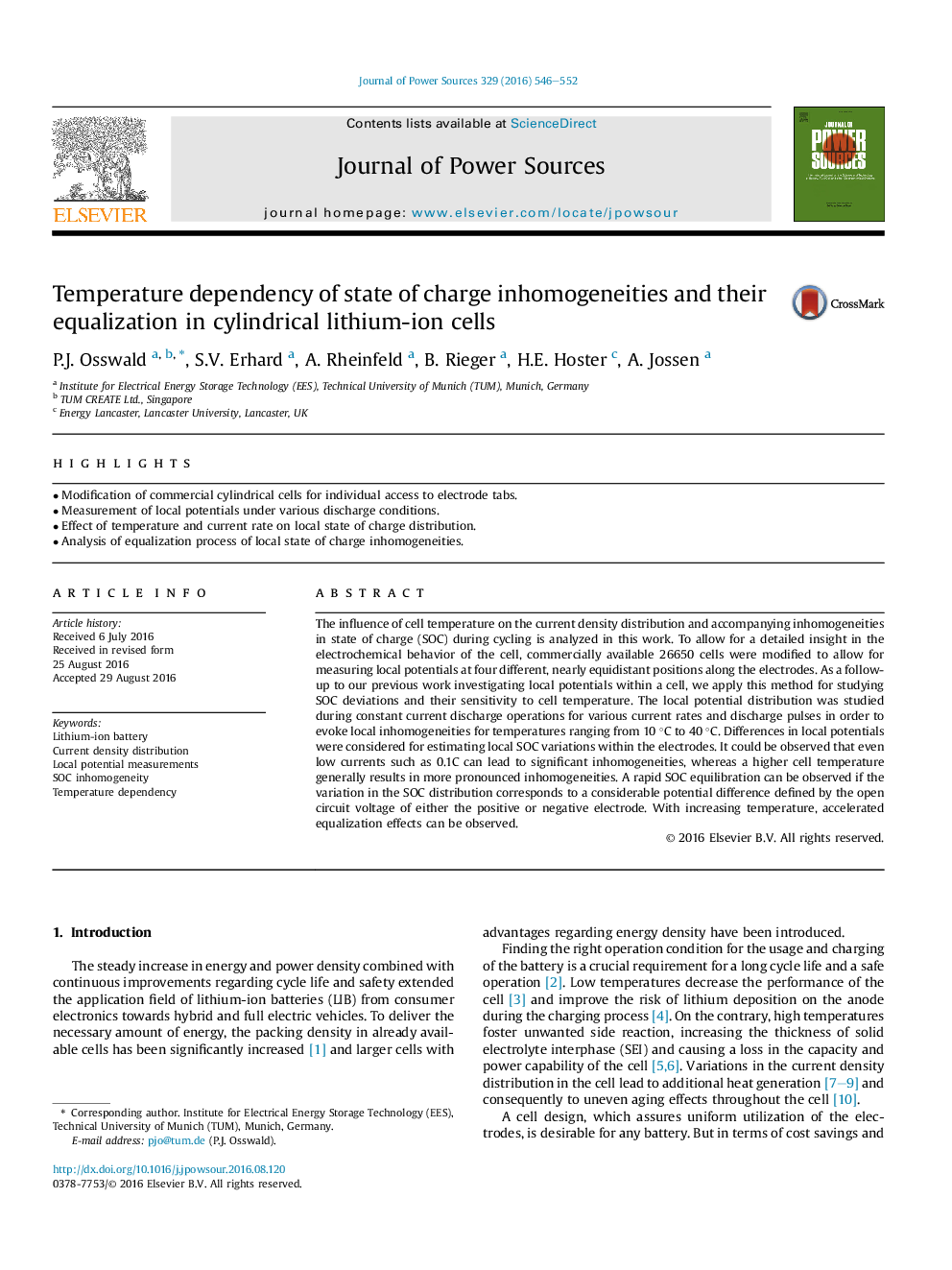| Article ID | Journal | Published Year | Pages | File Type |
|---|---|---|---|---|
| 7726750 | Journal of Power Sources | 2016 | 7 Pages |
Abstract
The influence of cell temperature on the current density distribution and accompanying inhomogeneities in state of charge (SOC) during cycling is analyzed in this work. To allow for a detailed insight in the electrochemical behavior of the cell, commercially available 26650 cells were modified to allow for measuring local potentials at four different, nearly equidistant positions along the electrodes. As a follow-up to our previous work investigating local potentials within a cell, we apply this method for studying SOC deviations and their sensitivity to cell temperature. The local potential distribution was studied during constant current discharge operations for various current rates and discharge pulses in order to evoke local inhomogeneities for temperatures ranging from 10 °C to 40 °C. Differences in local potentials were considered for estimating local SOC variations within the electrodes. It could be observed that even low currents such as 0.1C can lead to significant inhomogeneities, whereas a higher cell temperature generally results in more pronounced inhomogeneities. A rapid SOC equilibration can be observed if the variation in the SOC distribution corresponds to a considerable potential difference defined by the open circuit voltage of either the positive or negative electrode. With increasing temperature, accelerated equalization effects can be observed.
Related Topics
Physical Sciences and Engineering
Chemistry
Electrochemistry
Authors
P.J. Osswald, S.V. Erhard, A. Rheinfeld, B. Rieger, H.E. Hoster, A. Jossen,
